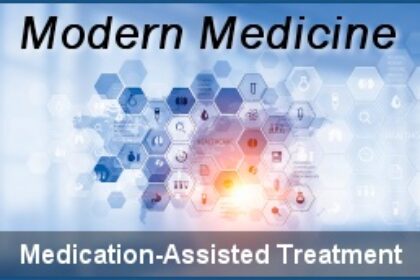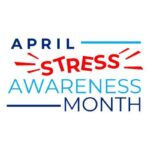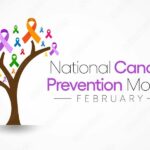The Case for Medication Assisted Recovery

Historically, abstinence-based recovery has sought to establish that recovering addicts abstain from all use of illicit substances including alcohol. This model of treatment was originally rooted in the Alcoholics Anonymous 12 Step Program which by design was intended to address alcohol addiction specifically. That program has been extremely popular and effective in helping alcohol dependent persons find a renewed life of sobriety.
However, there has emerged through several decades a perspective from some individuals in the recovery community that “medication-assisted treatment” is not true recovery, a form of cheating or not fully honoring the spirit of the recovery journey. This attitude is found in 12 Step meetings, doctors’ offices, and even in established addiction treatment centers.
Opioid addiction is a complex illness that has had a massive impact on American society. Because of this, it has been extensively studied for decades by medical researchers, and a body of science-based findings has emerged in regard to the successful treatment of opioid addiction. The medical and scientific communities have concluded that “medication-assisted treatment” for opioid addiction is not just an option, but is the recommended modality of treatment for moderate to severe opioid addictions.
 ASAM (American Society of Addiction Medicine), SAMHSA (Substance Abuse and Mental Health Services Administration), and the APA (American Psychiatric Association) have all clarified independently that medication-assistance is an essential tool in the responsible treatment of opioid addiction.
ASAM (American Society of Addiction Medicine), SAMHSA (Substance Abuse and Mental Health Services Administration), and the APA (American Psychiatric Association) have all clarified independently that medication-assistance is an essential tool in the responsible treatment of opioid addiction.
Addiction treatment facilities and detoxes that withhold medication management or that force “abstinence-only” recovery approaches are placing their clients at unacceptably high risk for relapse and opioid overdose. Dr. Steven Batki reports that numerous studies show that around two-thirds of opioid addicted patients will relapse without medication-assistance (APA).
The “abstinence-only” recovery approach used for alcoholics often does not work well with opioid addiction, which in part has to do with profound, rapid brain chemistry changes that occur in the development of opioid addiction. SAMHSA emphasizes that the goal of MAT (medication-assisted treatment) is full recovery and the ability to lead a self-directed life. MAT has been proven to:
- Improve patient survival
- Increase retention in treatment
- Decrease illicit opiate use and other criminal activity among people with substance use disorders
- Increase patients’ ability to gain and maintain employment
- Improve birth outcomes among women who have substance use disorders and are pregnant
(Source: SAMHSA)
![]() A New England Journal of Medicine article states that even in remission, opioid addicted people have 20 times the risk of an early death over the general population. And this risk is greatly magnified with each subsequent relapse. In regard to opioid addiction, the article goes on to say:
A New England Journal of Medicine article states that even in remission, opioid addicted people have 20 times the risk of an early death over the general population. And this risk is greatly magnified with each subsequent relapse. In regard to opioid addiction, the article goes on to say:
“Acute withdrawal symptoms are followed by weeks to months of protracted withdrawal syndromes that include fatigue, anhedonia, a poor appetite, and insomnia. The most effective approach to treating a patient who has withdrawal is to prescribe a long-acting oral opioid (usually methadone or buprenorphine) to relieve symptoms … “
Additionally, the article reports:
“The effectiveness of methadone maintenance is well established, and this drug is listed among “essential medications” by the World Health Organization. Maintenance programs decrease mortality by approximately 50% among persons with opioid-use disorders, decrease acquisition of HIV infection and hepatitis, decrease crime and illicit-substance use, improve social functioning, and increase the rate of retention in rehabilitation programs.”
Dr. Mary Jeane Kreek, a pioneering researcher at Rockefeller University in New York City, says “It’s time for everyone to wake up and accept that abstinence-based treatment only works in under 10 percent of opiate addicts. All proper prospective studies have shown that more than 90 percent of opiate addicts in abstinence-based treatment return to opiate abuse within one year.” (more information here)
In closing, it should be said that many “abstinence-only” advocates have good intentions. Abstinence programs have worked well for certain individuals and with certain addictions. But not all addictions are the same, and therein lies a monumental difference in distinguishing the recovery path that many opioid addicted people need to take in order to save their own lives.
 A Triad-area substance abuse outreach worker recently said in the news “You cannot recover if you’re dead.” Opioid addiction is a powerful disease and a rapid killer. The relapse risk is extremely high. Medical research and science, provided enough time, can point people in the proper direction and open doors to life.
A Triad-area substance abuse outreach worker recently said in the news “You cannot recover if you’re dead.” Opioid addiction is a powerful disease and a rapid killer. The relapse risk is extremely high. Medical research and science, provided enough time, can point people in the proper direction and open doors to life.
Medication-assisted treatment (MAT) is part of a comprehensive approach to recovery and in managing one’s illness. It is a tried and true path which has saved numerous lives. Methadone and buprenorphine (Suboxone) are providing addicts a new start and opening a door to recovery which, for many, was previously closed.











